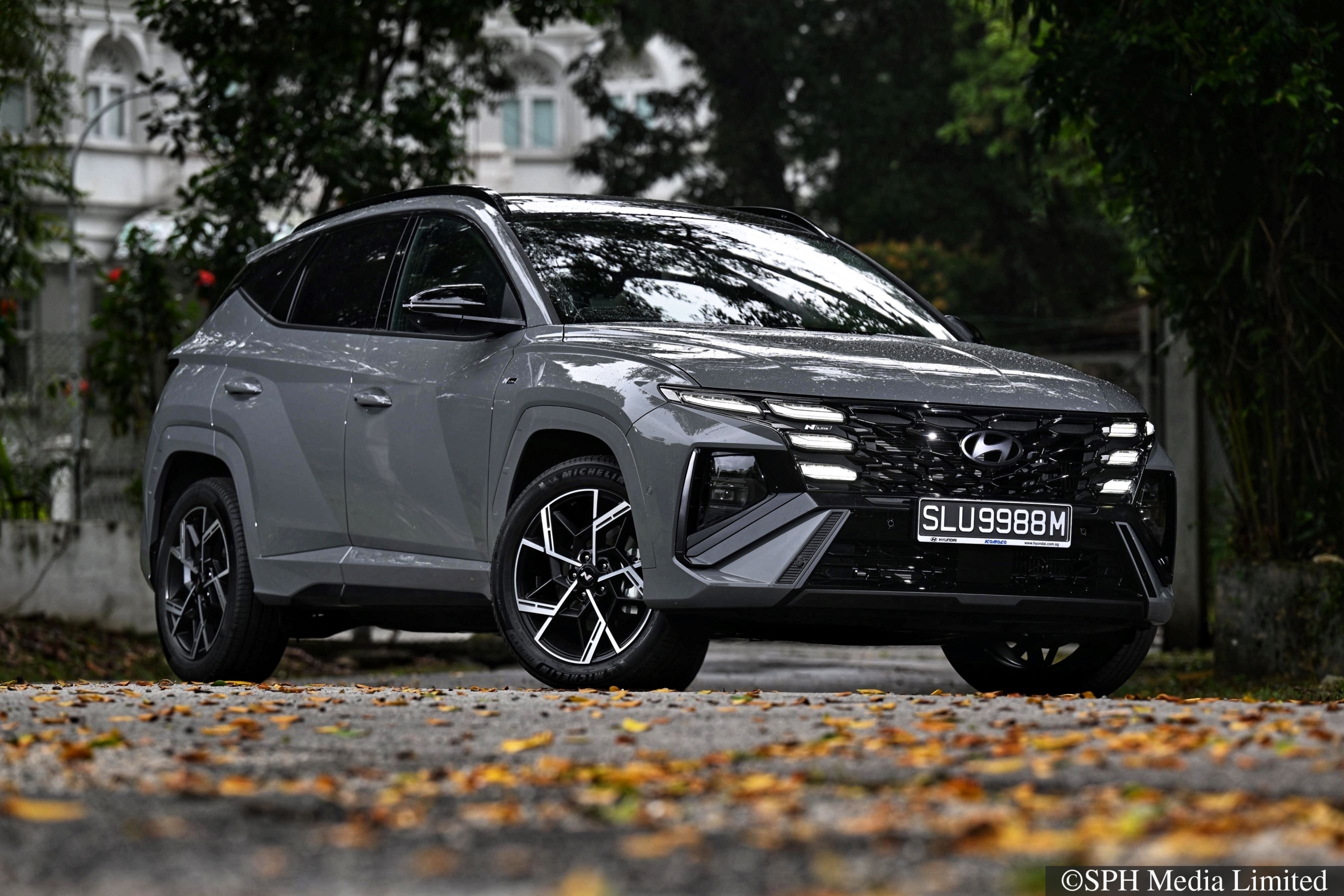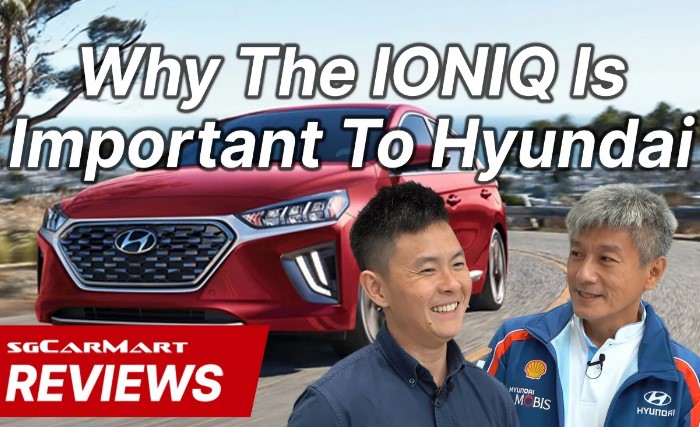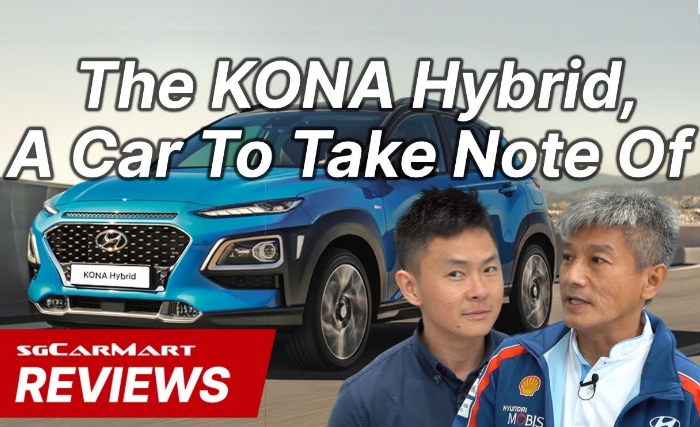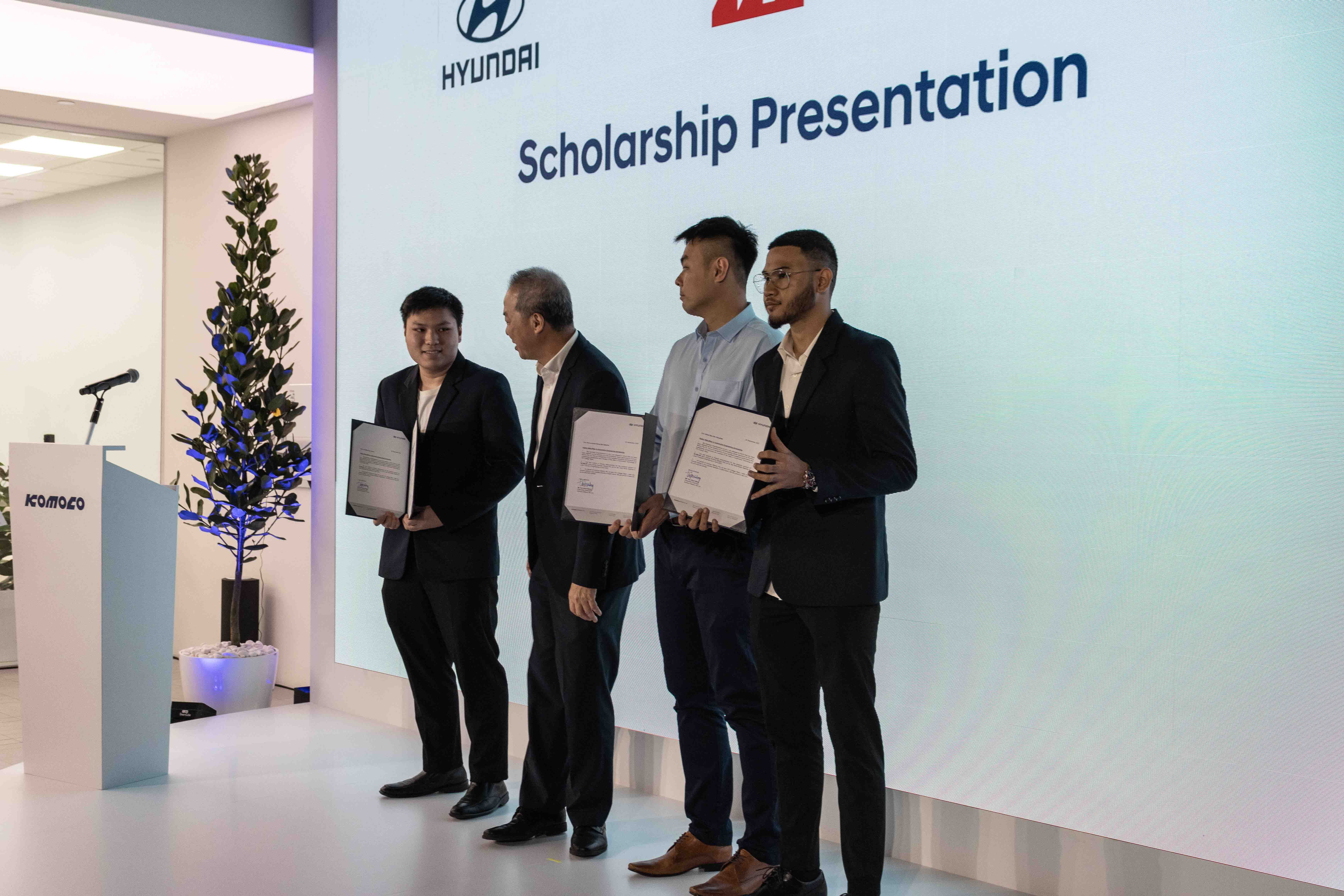SINGAPORE – Pulau Tekong, the Singapore island that is used for basic military training, saw more than 240mm of rain on Jan 10, more than what the Mojave Desert receives in an average year. Come hell or high water, the updated Hyundai Tucson is ready.
Or at least, being an all-wheel drive, it will be more capable to cope with slippery conditions.
This is a change from the pre-facelift model, which had front-wheel drive – the predominant format among mass-market mid-sized sport utility vehicles (SUVs) on sale in Singapore.
The Tucson’s system apportions up to 50 per cent of driving force to the rear axle as a backup when the front tyres are struggling. This may be during accelerations off the line. Otherwise, the Tucson operates as a front-wheel-drive car for fuel efficiency.
A setting in the digital display shows the torque split between the axles.
From the driver’s seat, it is not possible to feel how much drive is shuffled to the rear, but whatever it does works. The Tucson felt sure-footed when powering on during the persistent downpour encountered during the test drive, going exactly where the steering wheel Was pointing it to.
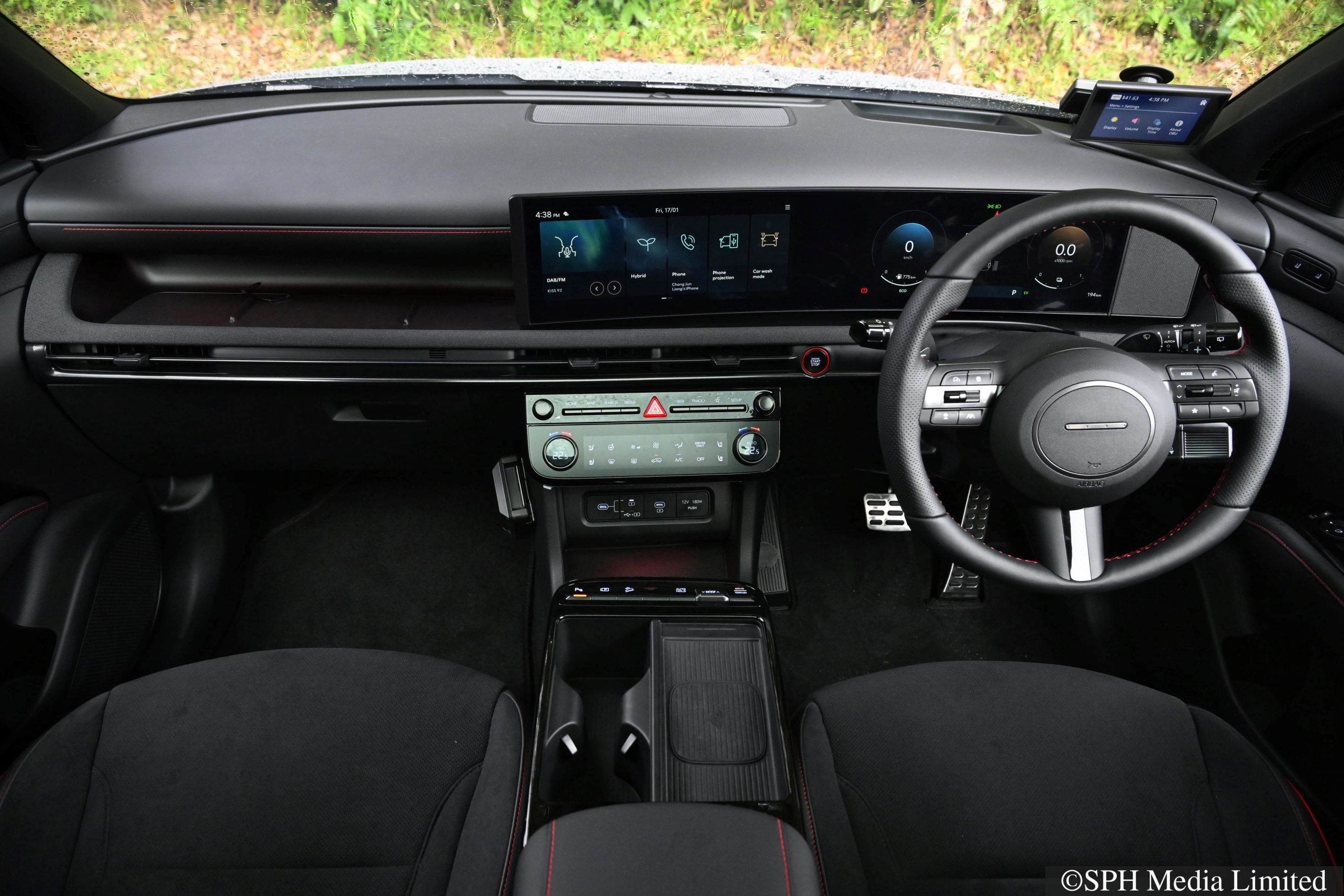
As in its pre-facelift form, the updated Tucson has a 1.6-litre petrol hybrid engine, but the combined output is lower – at 212hp, instead of 230hp on the pre-facelift model. This is paired with a six-speed automatic transmission, which offers manual control with the shift paddles when the car is in Sport mode. In the standard Eco mode, the paddles set the amount of energy recuperation, like Hyundai’s electric vehicles.
On paper, the updated car – with its lower output and weight of the all-wheel-drive hardware – takes 8.5 seconds to get to 100kmh from rest, half a second slower than the pre-facelift model. In actual driving, the car feels brisk enough. It is responsive too, at least when operating in Sport mode.
Over the 310km test drive that stretched over nearly four days, the car registered an average fuel consumption of 7.9 litres/100km, some way from the 6.6 litres/100km claim and higher than the 6.2 litres/100km achieved in 2021, when The Straits Times reviewed the pre-facelift car.
In its defence, a fair bit of the drive was done under extremely wet weather conditions, which does no favours to fuel efficiency as the tyres’ rolling resistance is increased.
The Tucson is the only model in the local Hyundai line-up to be available in the N-Line form. Think of it as the AMG Line for Mercedes-Benz. This is a trim level intended to make the Tucson look sportier than the standard version without radically changing the way the car drives.
On the outside, other than some badges, the N-Line’s front grille is a bit different from the standard version and the rear diffuser design is a bit more exaggerated.The otherwise unpainted claddings around the wheel arches are finished in the same colour as the rest of the body. The Shadow Gray colour on the test car is unique to the N-Line.
Also unique to the N-Line are the panoramic glass roof and 19-inch tyres instead of 18-inch ones.
Otherwise, updates to the exterior of the Tucson for the facelift are not that easy to spot. The car continues to look rather stylish with its imposing front end that seems to be made up entirely of the front grille, with the lighting elements peeping out between the louvres. The car has sharp proportions with bold diagonal slashes across its flanks.
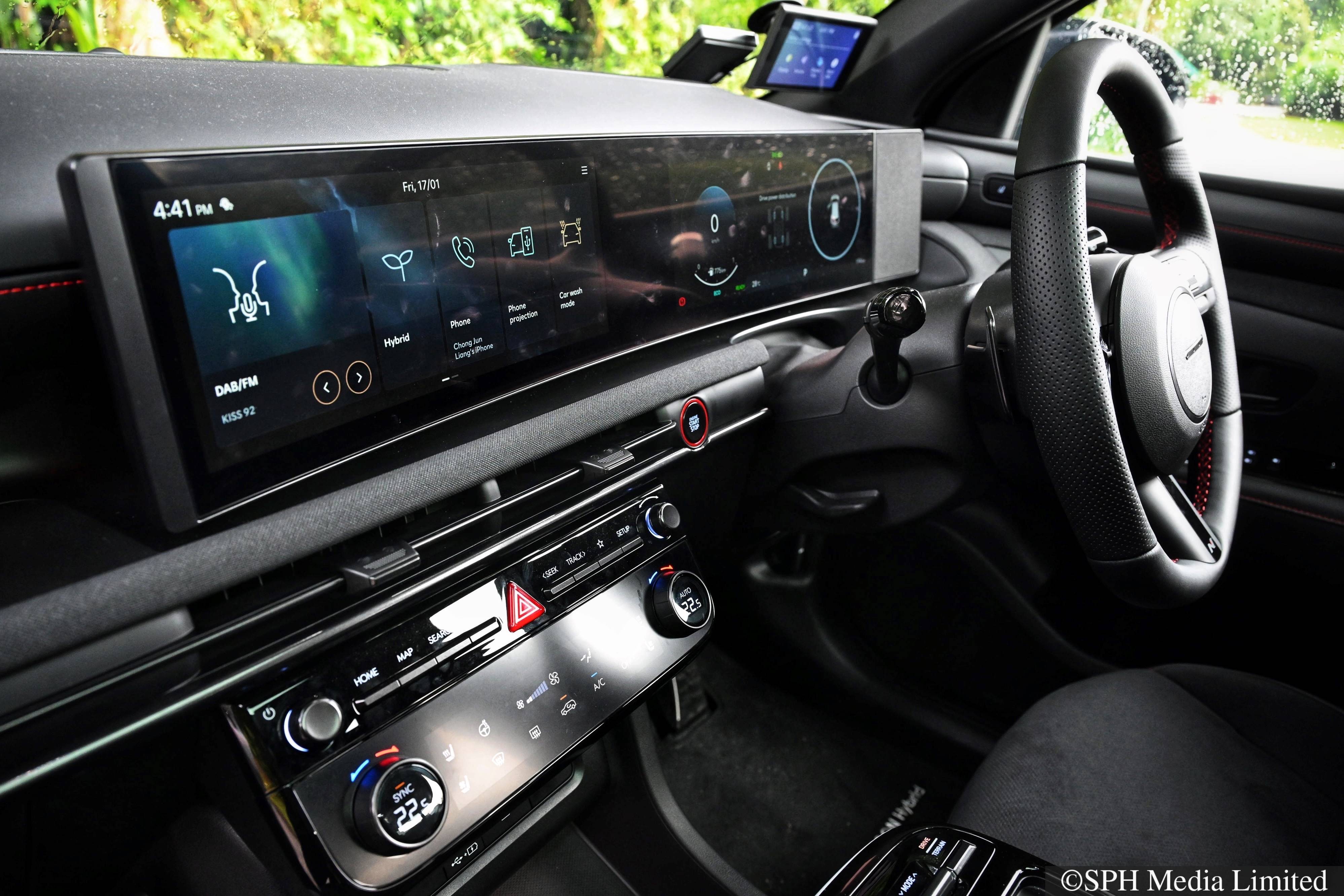
Changes to the interior are more significant. Instead of having a separate screen ahead of the driver and another one in the middle of the dashboard as before, the updated Tucson has a single curved screen panel similar to the one seen in theSanta Fe seven-seat SUV. A separate bank of buttons and knobs complements the touchscreen functionalities. The space where the push button gear selector was on the middle console now houses the wireless phone charging pad.
Gear selection is done with the chunky stalk extending from the steering column.
As a family car, the cabin is usefully spacious, with a squarish boot. The rear seats can be easily folded using the latches in the boot or by pulling the levers at the seat.
N-Line specific touches in the cabin include a part-suede, part-leather dark grey upholstery with red stitching and a black roof lining. The standard car, in beige leather upholstery and lighter-coloured roof lining, comes across as being a little more premium and probably more in line with the refined character of the car.
In either form, the Tucson is highly equipped with features and driving aids – from being able to keep itself in a lane to a remote parking feature where you can have the car move forward or backwards by just holding a button on the remote while standing outside the vehicle.
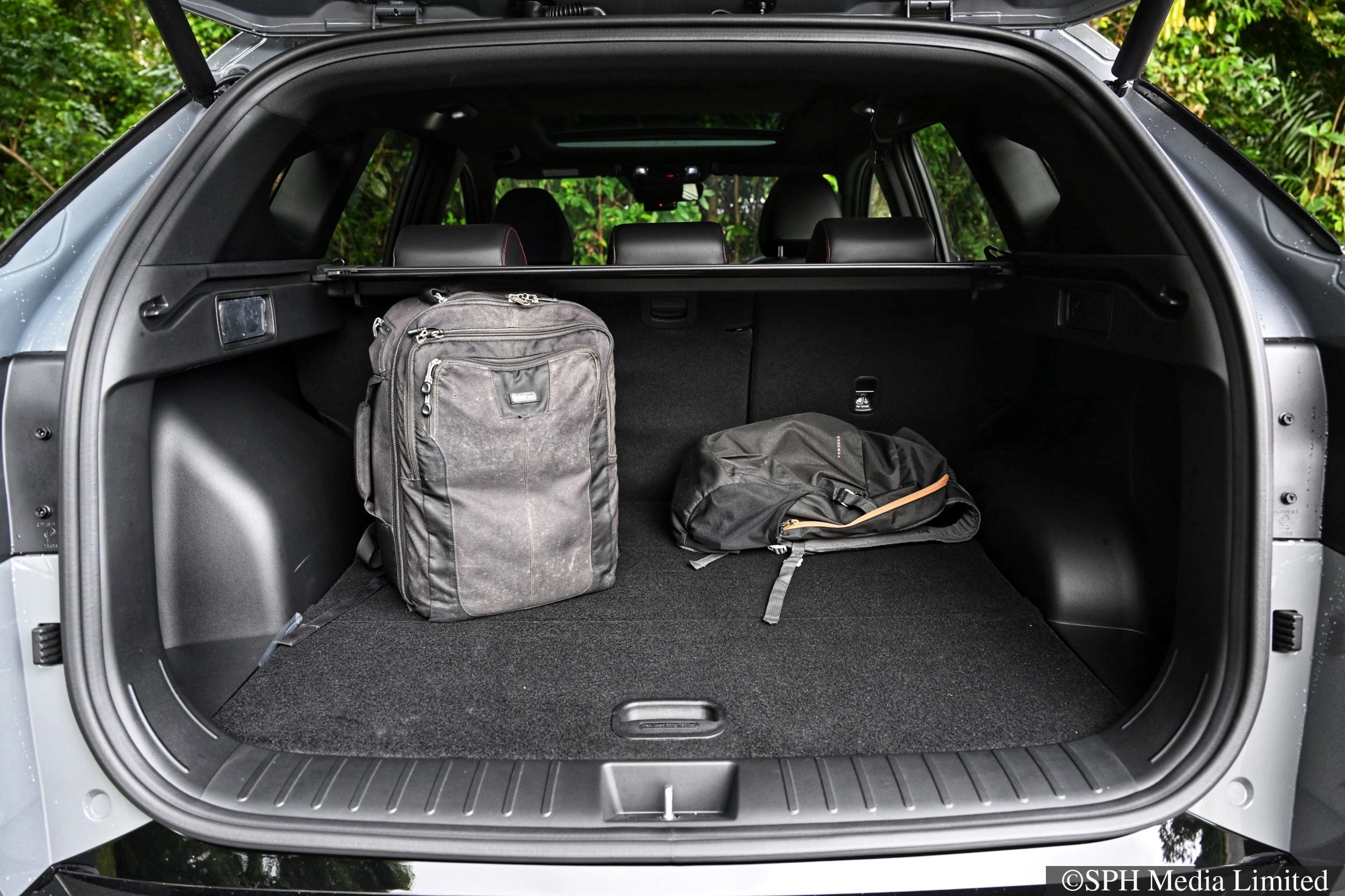
Other than missing the pleasure of the panoramic roof, the Tucson is more than attractive enough in the standard form, along with the $12,000 savings over the N-Line.
Hyundai Tucson AWD 1.6T N-Line
Price: $298,999 with certificate of entitlement (COE) before discounts
Engine: 1,598cc 16-valve inline-4 turbo, with 47.7kW hybrid motor
Transmission: Six-speed automatic with paddle shift
Power: 160hp at 5,500rpm; 212hp at 5,500rpm (combined)
Torque: 265Nm at 1,500-3,500rpm; 367Nm at 1,000-3,600rpm (combined)
0-100kmh: 8.5 seconds
Top speed: 186kmh
Fuel consumption: 6.6 litres/100km
Agent: Komoco Motors
Rating: ★★★☆☆
Source: [The Straits Times] © SPH Media Limited. Permission required for reproduction.
